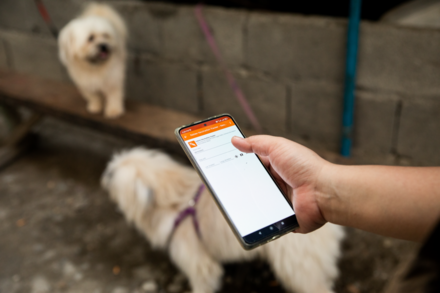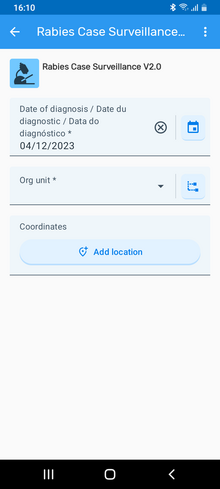Surveillance tools that suit your needs: Latest updates to the GARC app and tools

The human factor is the most expensive aspect related to any rabies elimination effort. For example, salaries, accommodation, and transport are the biggest costs associated with mass dog vaccination campaigns driven by governments or any other stakeholder. While the act of vaccinating a dog is often relatively short, it is the time spent doing the data capture afterwards that often consumes most of the time. As the aim of any vaccination campaign is to vaccinate as many dogs as possible, we need to ensure that the people doing the hard work spend as much time as possible vaccinating dogs and as little time as possible capturing data. While surveillance is critical to driving effective rabies elimination interventions, it should certainly not take up a lot of time – luckily, with the GARC app and the suite of surveillance tools that we offer, we have streamlined this process to capture the essential data in a matter of seconds.
While these surveillance tools, such as the Rabies Vaccination Tracker (RVT) and the Vaccination and Sterilization Tracker (VST) for vaccination tracking, and the Rabies Case Surveillance (RCS) for clinical and laboratory-confirmed rabies case reporting – among many other tools that we offer – have been available for some time, we continue to work to improve them to address gaps or needs highlighted by those experts working in the communities that are putting these tools to use.
It is for this reason that we have made several critical improvements to these tools, ensuring that what is needed by the stakeholders on the ground is delivered through these tools. Not only have we improved the tools themselves, but the GARC App has undergone several major improvements to make the overall process smoother and easier for the user. Let’s explore the different updates and highlight why these are so important for you:

GARC App
The GARC surveillance tools have been built on the DHIS2 platform, and the GARC app therefore uses the DHIS2 capture app platform for in-field data collection. To many, the App may look different to when you first started using the system, as it has undergone some major changes to better streamline usability and user-experience. Most notably, some of the latest updates include improved ‘Organisation Unit’ selection, and a map that appears when selecting your GPS coordinates – making it easier to confirm that the coordinates automatically captured by your phone are correct and exact. This is especially helpful when you have a weak GPS signal or when a user has not activated their location services on their phone, helping them immediately identify that the coordinates may not be correct and avoiding those points appearing in the middle of the ocean!
Vaccination and Sterilization Tracker (VST)
In addition to the overall look and usability of the App itself, we have made specific improvements to the VST tool, based on your feedback and suggestions. The VST now boasts additional options for “reasons why the animal was not sterilized”, including “medical” and the animal being “too young”. Furthermore, the user can now add additional information relating to the medical reasons for example and can capture the particular medical condition that may have delayed or prevented surgery. We would like to thank Soi Dog Thailand in particular for their suggestions to improve this section.
Considering that the VST is predominantly designed for, and used by, stakeholders undertaking general dog welfare programs, the need to capture additional data about possible treatments have now been included too. A free-text field is now available where the user can capture any additional information about treatments, conditions, needs or any other key data relating to the animal.
Rabies Case Surveillance (RCS)
Knowing the signs and symptoms of rabies cases when they are diagnostically confirmed in a laboratory can provide key scientific data to help better identify and clinically diagnose new rabies cases in the future, as well as present important data for the continued study of the disease. While the RCS tool always captured this, the clinical data was replaced on the dashboards with the laboratory diagnostic results, meaning that the clinical signs were no longer easily accessible. With our latest update to the RCS tool, we have removed this issue and ensured that clinical signs and symptoms will also be displayed on the dashboards – even after the case has been diagnosed in a laboratory.
New Languages
Accessibility and understanding are key to making data capture easy and practical for any stakeholder. Therefore, we have worked hard alongside our partners to continue to provide the GARC surveillance tools in various languages. We continue to expand the language availability with tools now available in English, French, Spanish, Portuguese, kiSwahili and Hindi. As always, we continue to partner with groups around the world to make these tools more accessible and will continue to work with you – our partners – to deliver tools that best suit your needs.
As we move forward into 2024 and beyond, we will continue to listen to user feedback to guide us on the ongoing development of new tools and the perpetual improvement of existing tools to better suit your needs.
If you have any requests for additional data elements to be included or even new tools that are not yet available, please let us know. While we must carefully consider every addition – as it will affect every user – we will certainly investigate and assess the benefits of every suggestion.
Article contributed by: Terence Scott, Director of Programs